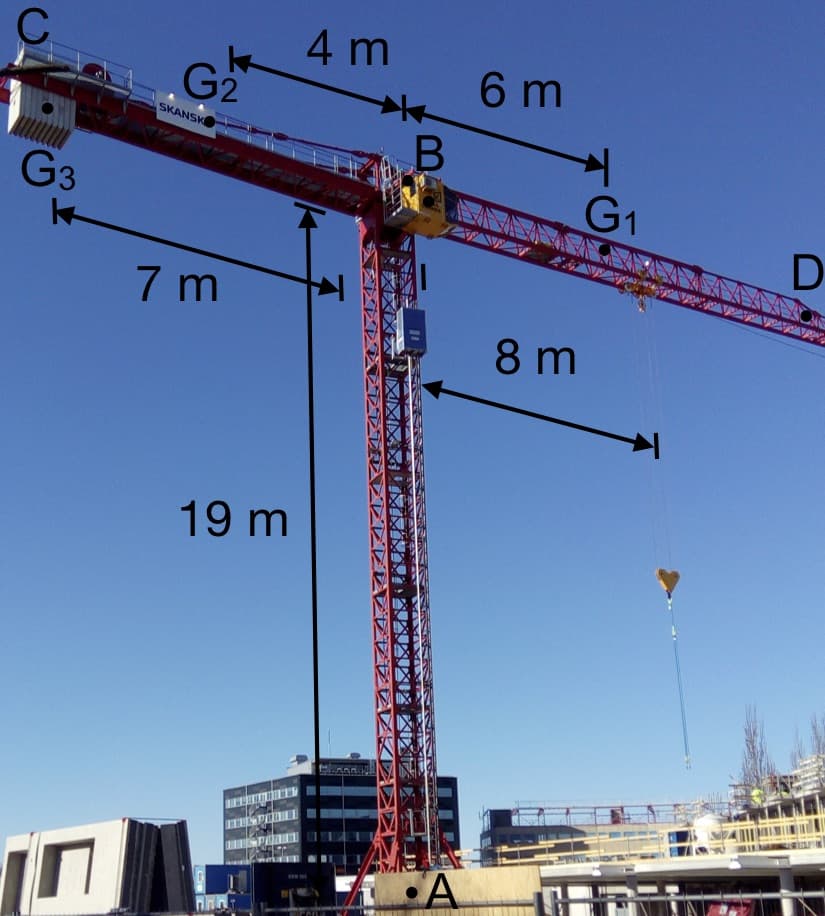The tower crane is used to lift the 1.8-ton load upwards at a constant speed. The mass center of the 1.4-ton beam BD is at G1, the mass center of the 0.5-ton beam BC is at G2 and the mass center of the 6.8-ton counterweight C is at G3. A) Determine the moment of force exerted by the load, counterweight and beams together around point A and point B. Let counterclockwise rotation be a plus. Express the answers with three value digits, and separate the force moments for point A and point B with a comma. B) To get the correct answer to the calculation in the previous task, should one assume that the tower crane is a rigid body? (choose the right answer) - Yes, but it is always a bad approximation in reality: all bodies are deformable (regardless of size) - Yes, because it is a good approximation, it would only be bad if the load was so heavy that the crane bent significantly - It does not matter, you can assume it or not, you always get the same mathematical equations no matter what you assume - No, I assumed the tower crane is a particle. Stiff body is much more complicated - No, one can never make the rigid-body assumption when it comes to such large objects, for large objects are never deformed negligibly
The tower crane is used to lift the 1.8-ton load upwards at a constant speed. The mass center of the 1.4-ton beam BD is at G1, the mass center of the 0.5-ton beam BC is at G2 and the mass center of the 6.8-ton counterweight C is at G3.
A) Determine the moment of force exerted by the load, counterweight and beams together around point A and point B. Let counterclockwise rotation be a plus.
Express the answers with three value digits, and separate the force moments for point A and point B with a comma.
B) To get the correct answer to the calculation in the previous task, should one assume that the tower crane is a rigid body? (choose the right answer)
- Yes, but it is always a bad approximation in reality: all bodies are deformable (regardless of size)
- Yes, because it is a good approximation, it would only be bad if the load was so heavy that the crane bent significantly
- It does not matter, you can assume it or not, you always get the same mathematical equations no matter what you assume
- No, I assumed the tower crane is a particle. Stiff body is much more complicated
- No, one can never make the rigid-body assumption when it comes to such large objects, for large objects are never deformed negligibly

Step by step
Solved in 2 steps with 1 images









